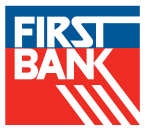Parents often think of the college tuition price tag as being their primary responsibility. However, depending on each family’s unique situation, who is paying for college and how much is paid out-of-pocket, can vary widely. With college education costs on the rise, it’s important to plan as early as possible with college savings plans, such as a 529 college savings plan. However, with rising inflation, squeezed budgets, or late starts to college planning, this isn’t always possible.
Are there potential ways that teens can help pay for their college education or potentially even offset the college price tag—even before they’re even enrolled?
Encourage your student to consider the following checklist prior to their freshman year of high school:
1. Get good grades. It goes without saying that good grades should be encouraged; however, these grades can also pay off in the long run. Many scholarship opportunities have grade point average requirements and if your student isn’t making the necessary grades, their chances at receiving them diminishes. Look for tutoring assistance early, wherever needed.
2. Participate in extracurricular activities. Not all students are able to participate in school athletics, however, there are other options available to them. Encourage your teen to get involved with as many activities as they can without jeopardizing their grades. Better yet, encourage leadership roles in clubs and organizations. This shows potential college admissions’ departments and scholarship boards that the student has the ability to be a leader and will take the initiative to get actively involved.
3. Enroll in duel enrollment courses. Many high schools offer the opportunity to enroll in dual-enrollment courses. These courses offer students the chance to obtain both high school and college credits with an advanced class that is taught by a college-level instructor. Often, these classes require more classwork, tests, and assignments. They are typically less expensive, however, than classes that are offered once the student is enrolled in college full-time. According to the National Alliance of Concurrent Enrollment Partnerships, approximately 10 percent of high school students are taking college-level courses.
4. Research scholarships and apply to them. When the time is right, seeking applicable scholarships should be just as important as completing assignments on-time. There are many scholarship opportunities available for a wide variety of organizations. The important thing to consider is that your student submits the required documentation by the deadline date.
According to the National Scholarship Providers Association (NSPA), an estimated $100 million in scholarships aren’t awarded simply because there aren’t enough applicants to fulfill them. That’s money wasted that could have been used to help fund college educations.
5. Work part-time. While working as a teen, parents should encourage their son or daughter to begin building up savings to help pay for college expenses. Consider opening a savings account online that offers a competitive interest rate for your teen. Once they begin working, help them set up regular direct deposits into their checking and savings accounts. This will help offset the amount of student loans that will be required once the student is in college full-time.
6. Sign up for the A+ Scholarship Program. Depending on your state and if your high school participates, the Department of Higher Education and Workforce Development allows high school students the option to sign an A+ Scholarship Program agreement to be awarded scholarship funds upon graduation to attend a participating public community college. In exchange, high school students must meet specific grade point averages, perform a set number of service hours, achieve good citizenship, and meet an attendance requirement.
If this program applies to your student, make a plan at the onset of high school to achieve these requirements and utilize the scholarship fund for two-years of tuition-free college classes.
Whether your child is just entering kindergarten or about to enter high school, making a plan for the rising college price tag as early as possible is important. If you’d like to discuss college planning for your student, reach out to a knowledgeable First Bank Wealth Management advisor. We can tailor a college savings plan with you to meet your unique needs.

